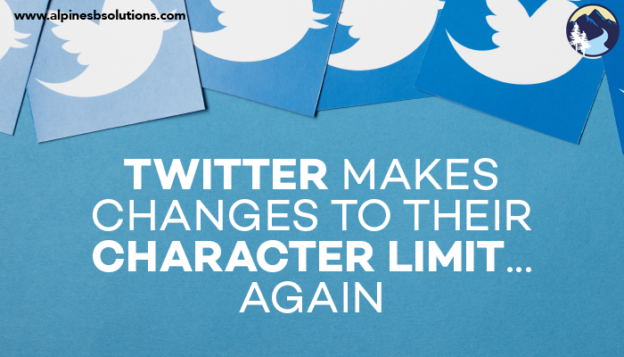For many of us, LinkedIn is a heck of a lot like eating enough vegetables or reducing the sugar in your diet.
You know you’re supposed to do it. You know you can benefit from it. But in the hustle and bustle of life, making and implementing a LinkedIn strategy consistently falls down to the bottom of your to-do list. And it never gets done.
Luckily, effective LinkedIn practices really do not take much time at all. A few minutes each day, week, month, and quarter can make a world of difference developing your personal branding.
Below is our recommended LinkedIn personal branding strategy guide. Commit to a few extra minutes and watch your online presence become stronger!
Daily LinkedIn Practices
 As an entrepreneur, you are already stretched pretty thin. I get it! The last thing you want is another item on your to-do list. Fortunately, this one really does only take a few minutes a day. If you need to, download the LinkedIn app on your phone so you can update it while waiting in line at the grocery store or during your commute.
As an entrepreneur, you are already stretched pretty thin. I get it! The last thing you want is another item on your to-do list. Fortunately, this one really does only take a few minutes a day. If you need to, download the LinkedIn app on your phone so you can update it while waiting in line at the grocery store or during your commute.
- Post content. Like any social media channel, LinkedIn requires consistent quality posting to be effective. Aim to post every day Monday through Friday. Regular posting showcases your industry knowledge, since it shows you know enough to identify then read content from top industry players. When you add in your own commentary, it showcases your witty and intelligent analysis. To save time, you can batch posts with Hootsuite and curate posts by plugging your favorite blogs into Feedly.
- Interact with others. Social media needs to be social. Take the time to do something every day. Support others’ career efforts by “liking” their job anniversaries or new gigs (or, even better, shoot off a personal message). Comment on articles posted by others to add your intelligent voice into the world.
Weekly LinkedIn Practices
 At some point each week, make sure you are completing the following tasks.
At some point each week, make sure you are completing the following tasks.
- Look for new contacts. Your network should always be growing. Attending networking events is a huge asset for this, but even just looking for people you know each week can massively grow your community. LinkedIn will suggest contacts for you in the “My Network” section, making it easy to continually be connecting. You can also look through profiles of those you know to see if you have mutual contacts.
- Interact in LinkedIn groups. LinkedIn groups are a valuable networking tool that gather like-minded professionals together. Aim for a smaller number of groups that you interact with frequently. You can search for groups here. Once you find groups, check out our post for best group practices.
Monthly LinkedIn Practices
 Each month, take the time to accomplish the following tasks.
Each month, take the time to accomplish the following tasks.
- Add in portfolio content. Ideally, each month you will be doing several projects that can be showcased in a portfolio. LinkedIn allows you to add in these pieces to display your amazing work. Take advantage of it! Adding in one or two projects a month can really round out your profile.
- Promote your profile elsewhere. If you maintain a personal branded Facebook or Twitter, create a few posts directing those audiences to your LinkedIn. Mention your profile in blog posts or a newsletter. Do a little bit of marketing each month to draw more people to your profile.
- Write blog posts. Well-written articles really help showcase your expertise. Taking the time to whip up one or two 500 word articles a month helps build your brand as a knowledgeable player in your industry.
Quarterly LinkedIn Practices
 Each quarter, take time to comb over your profile and make any necessary tweaks.
Each quarter, take time to comb over your profile and make any necessary tweaks.
- Examine your keywords. Your LinkedIn profile should be search engine optimized of course. But as your career develops, so might your career aspirations. Maybe last quarter you were more focused on general virtual assistant services, but recently you’ve delved into the world of social media marketing and love it. Adjusting your keywords can help make your profile appealing to different job recruiters. Use Word Cloud Generator to paste your LinkedIn text to see which keywords are most common (and adjust if they do not match your targeted industry keywords).
- Add in any new developments. Did you take a marketing class that you forgot to add in? Did your role shift at your current position and now you need a new description? It’s easy for these changes to happen without remembering to make adjustments on our LinkedIn. Going thoroughly through your profile each quarter helps make sure nothing important falls through the cracks.
When you take the time to build up your LinkedIn profile, it really can make a difference to your personal branding. Regular use helps paint you as an industry expert and someone others will really want to work with. It also serves as a self-reflection. Are you where you want to be in your career? What areas are you lacking experience? How can you re-adjust your strategy? Use your LinkedIn time to reflect on your career.
If you want assistance on setting up or building your LinkedIn profile, Alpine Small Business Solutions is here for you! Just give us a call or shoot us an email to get started.




 The cost per impression tends to be among the lowest for promotional products compared to other methods of advertising.
The cost per impression tends to be among the lowest for promotional products compared to other methods of advertising. For raising awareness among the target audience, promotional products lead to
For raising awareness among the target audience, promotional products lead to They say
They say
 Previously, a reply would involve a tweet beginning with “@username” and then the user’s message. The username character count went towards the 140-character limit. If a few users were involved in the conversation, the character total quickly got eaten up. It also made it difficult to actually see the message content since it was after a long string of usernames
Previously, a reply would involve a tweet beginning with “@username” and then the user’s message. The username character count went towards the 140-character limit. If a few users were involved in the conversation, the character total quickly got eaten up. It also made it difficult to actually see the message content since it was after a long string of usernames Twitter’s goal is to make conversations easier to follow, allowing users to focus on the discussion of the tweets and not the lists of those in the discussion.
Twitter’s goal is to make conversations easier to follow, allowing users to focus on the discussion of the tweets and not the lists of those in the discussion.  In the past few years,
In the past few years, 
 What actually happens when we fail to structure our day isn’t the
What actually happens when we fail to structure our day isn’t the  Just like you need boundaries with your time, you need boundaries with your space. Find a place in your house that’s just for work. Ideally, it will be a separate room. But, if you don’t have the space for a full office, that’s okay. Maybe you can set a desk in your bedroom or the living room. What’s important is you have somewhere to go with minimal distractions.
Just like you need boundaries with your time, you need boundaries with your space. Find a place in your house that’s just for work. Ideally, it will be a separate room. But, if you don’t have the space for a full office, that’s okay. Maybe you can set a desk in your bedroom or the living room. What’s important is you have somewhere to go with minimal distractions. Sometimes, we get so into our flow we don’t realize we’ve been working for hours straight. The best way to fight stress and burnout is proactively, so it’s important to avoid this work grind. Schedule breaks into your day. Maybe it’s 10 minutes every hour with a half hour lunch break. Maybe it’s the Pomodoro method, where you work for 25 minutes and take a five-minute break. Play around with different strategies and find
Sometimes, we get so into our flow we don’t realize we’ve been working for hours straight. The best way to fight stress and burnout is proactively, so it’s important to avoid this work grind. Schedule breaks into your day. Maybe it’s 10 minutes every hour with a half hour lunch break. Maybe it’s the Pomodoro method, where you work for 25 minutes and take a five-minute break. Play around with different strategies and find  This isn’t about becoming one of those scary “don’t you dare interrupt me while I’m working” work witches.
This isn’t about becoming one of those scary “don’t you dare interrupt me while I’m working” work witches. Some people (very few mind you) can work in grunge clothes without it affecting their work. Good for them!
Some people (very few mind you) can work in grunge clothes without it affecting their work. Good for them!
 team members. Praise their successes. Encourage reflection on their struggles and setbacks. Ask if they are happy with the direction of their role, and if there’s anything you can help them with. Talk with them about their life apart from work. Do everything you can to support them and ensure they feel valued, both as your valued team member and as an individual.
team members. Praise their successes. Encourage reflection on their struggles and setbacks. Ask if they are happy with the direction of their role, and if there’s anything you can help them with. Talk with them about their life apart from work. Do everything you can to support them and ensure they feel valued, both as your valued team member and as an individual. for your business to move forward with every
for your business to move forward with every  celebrate the past year. Highlight accomplishments and successes of the organization as a whole, and spotlight individuals who went above and beyond. Mention notable changes, like welcoming new staff members or new
celebrate the past year. Highlight accomplishments and successes of the organization as a whole, and spotlight individuals who went above and beyond. Mention notable changes, like welcoming new staff members or new